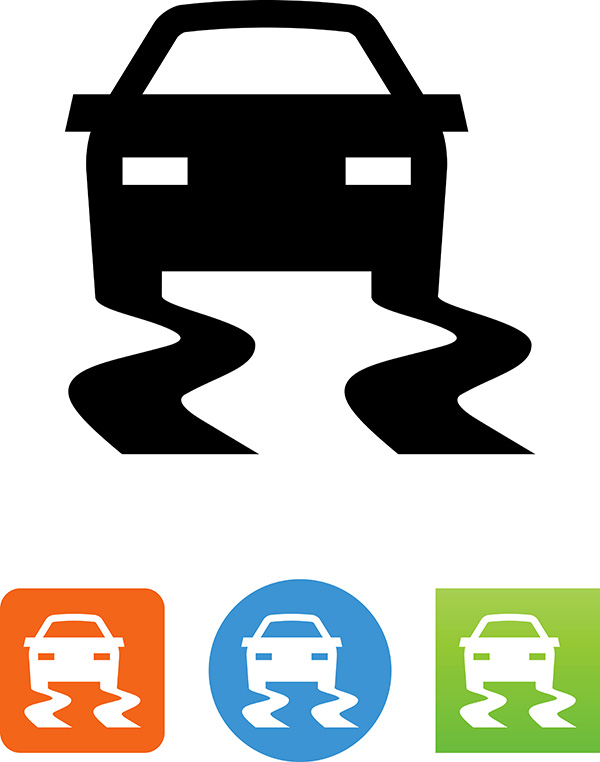
In the world of automotive safety, traction control is one of those features that you might not think about until you need it. Whether navigating a slick, rainy highway or accelerating on a snowy road, traction control can be a lifesaver. But how exactly does this system work to keep you safe? Let's break it down and explore the mechanics and benefits of traction control.
What is Traction Control
Traction control is an electronic system designed to prevent wheel traction loss. When a vehicle's wheels start to slip due to wet, icy, or loose road surfaces, the traction control system (TCS) kicks in to help maintain grip and stability. It modulates the power delivered to the wheels, ensuring that they do not spin excessively.
How Traction Control Enhances Safety
Preventing Wheel Spin
One key function of traction control is to prevent wheel spin. When you accelerate, especially on slippery surfaces, your wheels might spin faster than the car is moving. Traction control detects this discrepancy using sensors, reducing engine power, or applying brakes to the spinning wheels to regain traction. This helps maintain control and prevents skidding.
Improving Vehicle Stability
Traction control not only prevents wheel spin but also improves overall vehicle stability. By ensuring that each wheel has the right amount of power and grip, the system helps keep your car balanced and steady. This is particularly important in turns or during sudden maneuvers where loss of traction can lead to dangerous situations.
Components of the Traction Control System
Wheel Speed Sensors
The foundation of any traction control system is the wheel speed sensors. These sensors monitor the rotational speed of each wheel and send this information to the car's electronic control unit (ECU). If the ECU detects that one wheel is spinning faster than the others, it knows that traction has been lost and takes corrective action.
Electronic Control Unit (ECU)
The ECU is the brain behind the traction control system. It processes data from the wheel speed sensors and determines when and how to intervene to maintain traction. The ECU can adjust the throttle, apply brakes to individual wheels, or both, depending on the situation.
Braking System
Traction control often works in conjunction with the car's braking system. When the ECU detects wheel slip, it can apply the brakes to one or more wheels to reduce speed and restore traction. This braking action is usually very precise, targeting only the wheels that need it.
How Traction Control Operates in Different Conditions
Wet and Slippery Roads
Traction control is particularly valuable on wet or icy roads. These conditions reduce tire grip, making it easy for wheels to spin. Traction control adjusts engine power and braking to help you accelerate smoothly and maintain control, even when the road surface is less than ideal.
Loose Surfaces
Driving on loose surfaces like gravel or sand presents another challenge. Traction control helps by reducing wheel spin, allowing you to move forward steadily without digging your tires into the loose material. This can be especially useful for off-road driving or in rural areas.
Maintaining Your Traction Control System
Regular Inspections
Like any other car system, traction control requires regular maintenance to function correctly. Regular inspections can help ensure that all components, including the wheel speed sensors and ECU, are in good working condition. This preventive care can save you from unexpected issues down the road.
Responding to Warning Lights
If your traction control warning light comes on, don't ignore it. This light indicates a problem with the system that needs to be addressed. Driving without functional traction control can compromise your safety, especially in adverse conditions.
Keeping Tires in Good Condition
Your traction control system's effectiveness is closely linked to your tires. Worn-out or improperly inflated tires can reduce the system's ability to maintain traction. Regularly check your tires for wear and tear and ensure they are properly inflated to the manufacturer's specifications.
The Benefits of Traction Control
Enhanced Safety
The primary benefit of traction control is enhanced safety. By preventing wheel spin and maintaining stability, traction control helps you stay in control of your vehicle in various driving conditions. This reduces the risk of accidents, making your journeys safer.
Better Vehicle Performance
Traction control also improves vehicle performance, especially in challenging conditions. By optimizing power distribution and braking, it ensures smoother acceleration and better handling. This not only makes driving more enjoyable but also reduces wear and tear on your vehicle.
Ensure your car's traction control system is in top shape. Visit Central Automotive Service Center today for a comprehensive inspection and enjoy safer driving in all conditions.